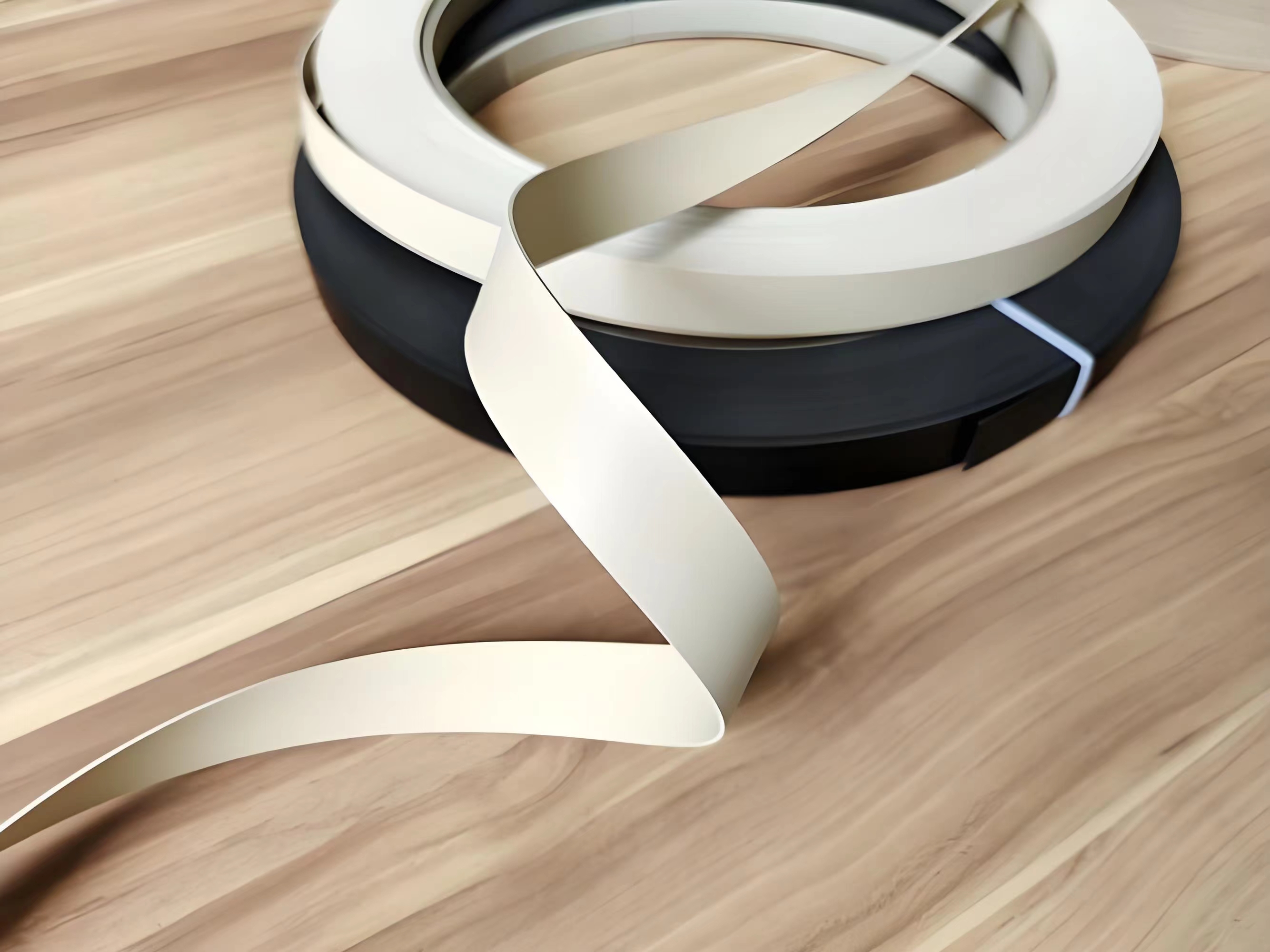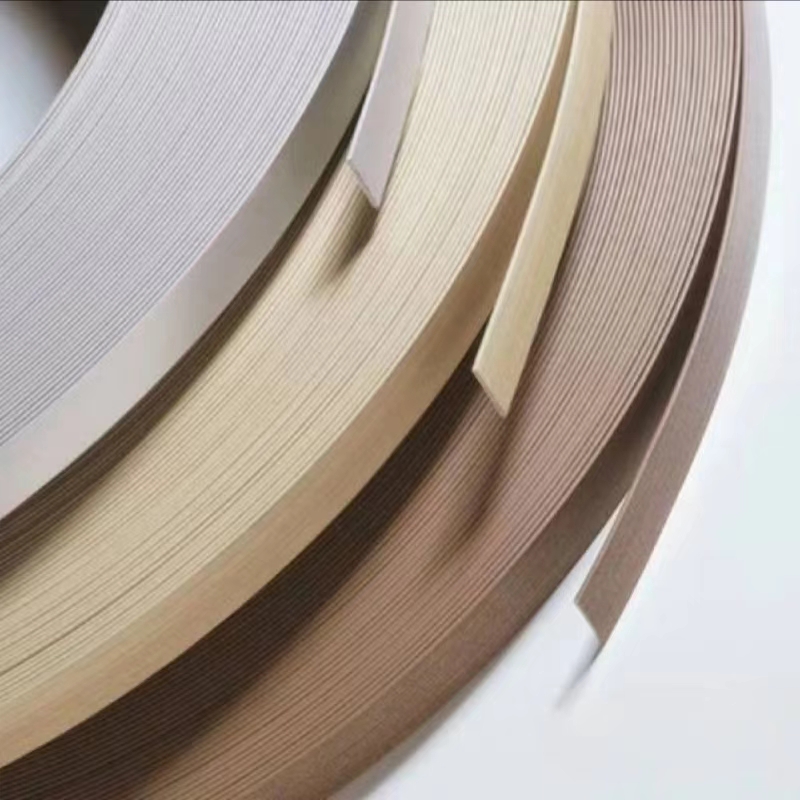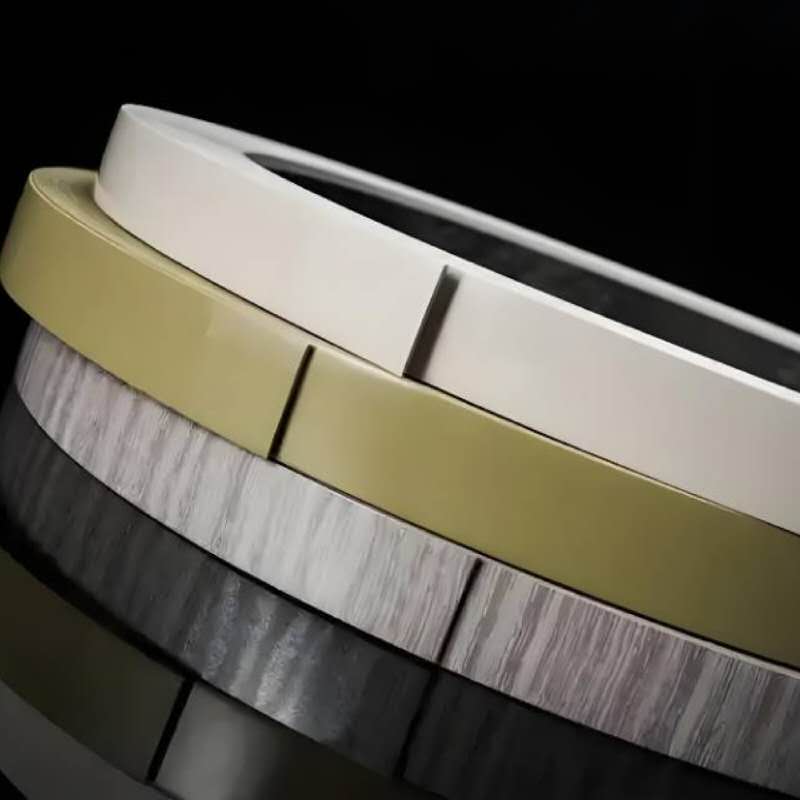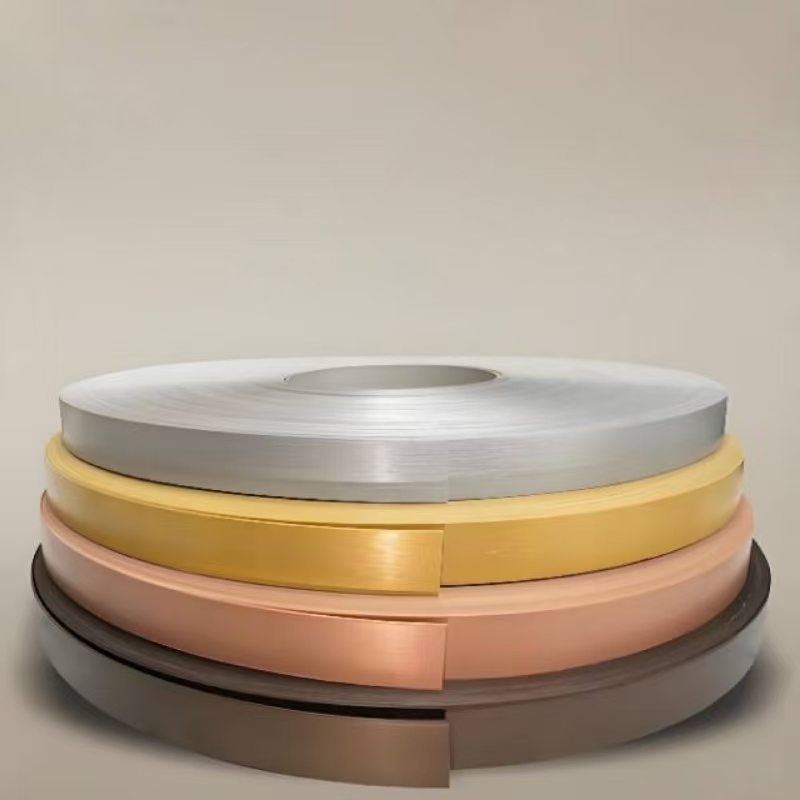The Versatility and Advantages of PP Edge Banding in Modern Furniture Manufacturing
In the dynamic landscape of modern furniture manufacturing, the pursuit of aesthetic appeal, functional durability, and market adaptability has driven the widespread adoption of innovative auxiliary materials. Among these, PP Edge Banding emerges as a core component, redefining the standards for furniture edge finishing by integrating protection, aesthetics, and practicality. Composed primarily of polypropylene (PP), this material has become a staple in residential, commercial, and industrial furniture production, owing to its inherent flexibility, impact resistance, and compatibility with diverse manufacturing processes. Whether applied to kitchen cabinets, office workstations, or retail display fixtures, PP Edge Banding plays an irreplaceable role in enhancing the structural integrity and visual consistency of furniture products.
 A key factor that distinguishes PP Edge Banding from traditional edge-finishing solutions (such as PVC edge bands or wooden veneers) is its exceptional adaptability to customized design needs—particularly through Colored PP Edge Banding. In today’s consumer-driven market, furniture design has shifted from standardized styles to personalized expressions, with end-users and designers demanding solutions that align with interior themes, color schemes, and brand identities. Colored PP Edge Banding addresses this demand by offering an extensive spectrum of hues, textures, and patterns. It can replicate natural materials (e.g., oak, walnut, or marble grains) with high precision, or provide solid colors ranging from muted neutrals (beige, gray) to bold tones (navy, emerald green), ensuring seamless matching with furniture panels. This versatility is not merely decorative: it conceals unsightly board cross-sections (which are prone to moisture absorption and splintering) and creates a unified, high-end appearance. For example, a minimalist living room with light oak veneer cabinets can use Colored PP Edge Banding in a matching oak grain to maintain design continuity; a children’s furniture line might adopt bright, non-toxic Colored PP Edge Banding in pastels to cater to youthful preferences; and commercial spaces like cafes or boutiques can leverage brand-specific Colored PP Edge Banding to reinforce visual identity while ensuring durability under high foot traffic.
A key factor that distinguishes PP Edge Banding from traditional edge-finishing solutions (such as PVC edge bands or wooden veneers) is its exceptional adaptability to customized design needs—particularly through Colored PP Edge Banding. In today’s consumer-driven market, furniture design has shifted from standardized styles to personalized expressions, with end-users and designers demanding solutions that align with interior themes, color schemes, and brand identities. Colored PP Edge Banding addresses this demand by offering an extensive spectrum of hues, textures, and patterns. It can replicate natural materials (e.g., oak, walnut, or marble grains) with high precision, or provide solid colors ranging from muted neutrals (beige, gray) to bold tones (navy, emerald green), ensuring seamless matching with furniture panels. This versatility is not merely decorative: it conceals unsightly board cross-sections (which are prone to moisture absorption and splintering) and creates a unified, high-end appearance. For example, a minimalist living room with light oak veneer cabinets can use Colored PP Edge Banding in a matching oak grain to maintain design continuity; a children’s furniture line might adopt bright, non-toxic Colored PP Edge Banding in pastels to cater to youthful preferences; and commercial spaces like cafes or boutiques can leverage brand-specific Colored PP Edge Banding to reinforce visual identity while ensuring durability under high foot traffic.
Beyond aesthetics, the practical performance of PP Edge Banding is further elevated by its ability to withstand harsh environmental conditions— a strength embodied in High-Temperature Resistant PP Edge Banding. Furniture in high-stress environments (e.g., kitchens, restaurants, or sun-exposed balconies) faces constant exposure to heat, which can cause inferior edge materials to warp, discolor, or peel over time. High-Temperature Resistant PP Edge Banding solves this pain point through its modified formulation, typically capable of withstanding temperatures between 80°C and 130°C (176°F to 266°F) without losing structural stability or color fastness. In kitchen settings, for instance, cabinets near stovetops or ovens are regularly exposed to cooking heat, and hot cookware or mugs are often placed on counter edges; High-Temperature Resistant PP Edge Banding prevents these edges from deforming, eliminating the need for premature repairs or replacement. In office environments, where laptops or heated beverage containers rest on desk edges, this variant maintains its shape and appearance, extending the service life of workstations. Even in homes with large south-facing windows, where prolonged sunlight raises surface temperatures, High-Temperature Resistant PP Edge Banding resists fading, ensuring furniture retains its original look for years. This heat resistance is not an optional add-on but a core attribute of premium PP Edge Banding, making it a reliable choice for scenarios where durability is non-negotiable.
The effectiveness of both Colored PP Edge Banding and High-Temperature Resistant PP Edge Banding depends on proper application, which typically involves pairing them with high-performance adhesives and standardized installation processes. Most PP Edge Banding products are applied via automated hot-melt adhesive systems, which create a strong, airtight bond between the edge band and the board. This method ensures that even under repeated use, temperature fluctuations, or minor impacts, Colored PP Edge Banding and High-Temperature Resistant PP Edge Banding do not peel or separate. For manufacturers, this translates to streamlined production: automated application reduces labor costs, improves consistency, and shortens lead times. For end-users, it means low-maintenance furniture—unlike wooden edges that require sanding or repainting, PP Edge Banding can be cleaned with a damp cloth, retaining its color and texture without special treatments.
Another compelling advantage of PP Edge Banding (including its colored and high-temperature resistant variants) is its alignment with global sustainability trends. Most PP Edge Banding products are made from recyclable polypropylene, and leading manufacturers comply with strict environmental certifications (such as E0 or E1 standards) to ensure low formaldehyde emissions and minimal VOC (volatile organic compound) release. This meets the growing demand for eco-friendly furniture, where consumers prioritize materials that reduce environmental impact without compromising quality. Additionally, the durability of Colored PP Edge Banding and High-Temperature Resistant PP Edge Banding reduces the frequency of furniture replacement, minimizing waste and extending the product lifecycle— a key principle of circular economy practices.
As the furniture industry continues to evolve, PP Edge Banding remains at the forefront of material innovation. The demand for Colored PP Edge Banding is projected to grow as customization becomes more mainstream, with advancements in digital printing technology enabling even more intricate patterns (e.g., metallic finishes or geometric designs) and precise color matching. Meanwhile, High-Temperature Resistant PP Edge Banding is expanding into new application areas, such as outdoor furniture or industrial workbenches, as manufacturers develop formulations that withstand extreme temperatures and UV radiation. These trends reflect the versatility of PP Edge Banding: it is not merely a “finishing touch” but a foundational material that bridges design, functionality, and sustainability.
In conclusion, PP Edge Banding has reshaped the furniture manufacturing industry by offering a balanced solution to aesthetic, functional, and environmental needs. Colored PP Edge Banding caters to the demand for personalized, visually cohesive furniture, while High-Temperature Resistant PP Edge Banding ensures long-term performance in challenging environments. Together, these variants solidify PP Edge Banding’s position as an essential material for designers, manufacturers, and consumers—driving the creation of furniture that is both visually appealing and built to last. As market demands evolve, PP Edge Banding will continue to adapt, leveraging technological advancements to meet the ever-changing needs of the global furniture ecosystem.




